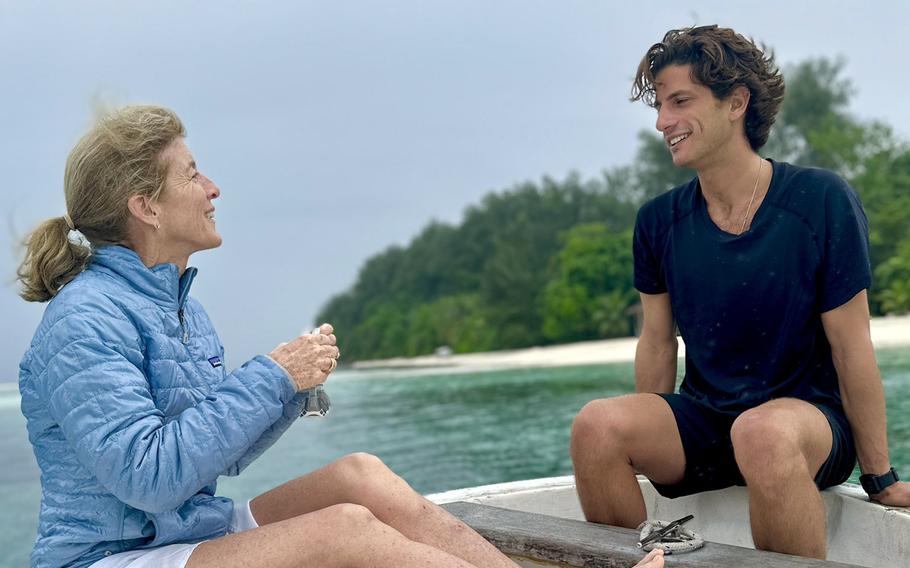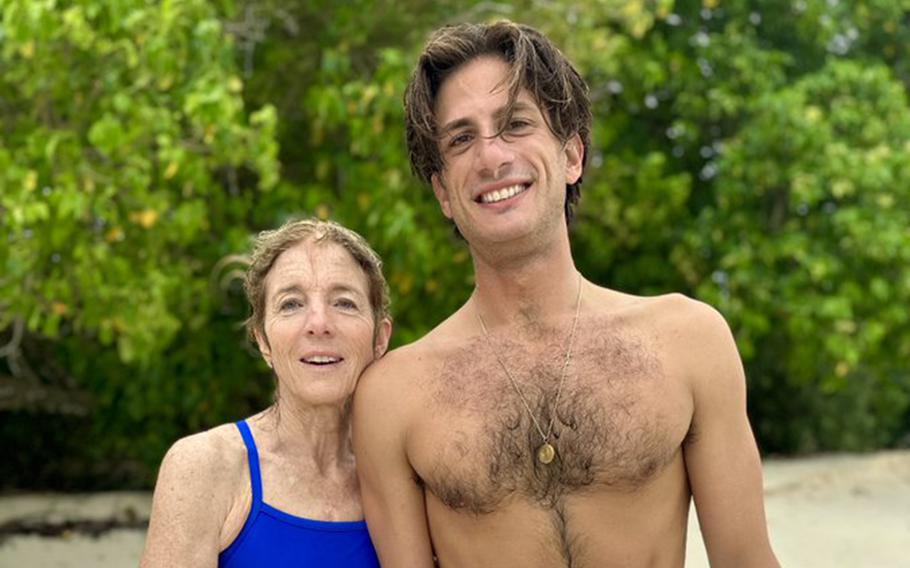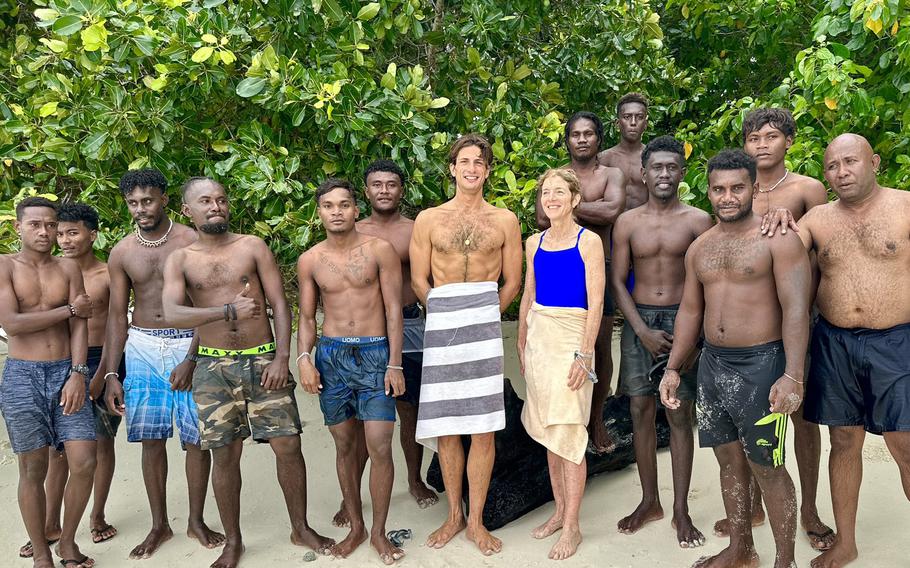
U.S. Ambassador to Australia Caroline Kennedy and her son, Jack Schlossberg, on Aug. 3, 2023, swam the route her father, President John F. Kennedy, covered as a naval officer in World War II. (U.S. Embassy Australia)
U.S. Ambassador to Australia Caroline Kennedy and her son, Jack Schlossberg, swam the Blackett Strait in the Solomon Islands on Wednesday to mark the 80th anniversary of the rescue of her father’s PT-109 crew.
John F. Kennedy — elected president in November 1960 and assassinated three years later — served as a naval officer in the Pacific during War World II. The wartime ordeal of PT-109, a patrol torpedo boat, added to his reputation as a leader as he vied against Richard Nixon for the White House.
“Eighty years ago, President Kennedy swum between Plum Pudding Island (now Kennedy Island), Naru Island, and Olasana Island — multiple times, at night — to save himself and his PT-109 crew,” the U.S. Embassy in Australia tweeted at 7:49 a.m. Wednesday.
Caroline Kennedy, 65, and Schlossberg, 30, John F. Kennedy’s only grandson, recreated the approximately 3-mile swim to “commemorate the heroism and perseverance of the President and his crew,” the embassy tweeted.
The night of Aug. 2, 1943, John F. Kennedy, later the nation’s 35th and youngest president, and a handful of crewmen survived the PT boat’s collision with a Japanese destroyer in the strait. Kennedy — a former member of Harvard’s swim team but with a bad back injured in the collision — led his men on a swim to safety the next morning.
Kennedy’s history provides a reminder of the Solomon Islands’ link to the United States as the island nation firms up ties with U.S. rival China.
Under an agreement signed July 11, the Solomon Islands will increase its cooperation with China on "law enforcement and security matters," The Associated Press reported. The islands’ growing ties with China alarms surrounding nations, including Australia and the United States.
Speaking Tuesday in the Solomon Islands at an official commemoration of PT-109, Caroline Kennedy recalled her father’s legacy and the islanders who helped him and his crew.
“This place made President Kennedy the man he was,” she said, according to a transcript. “And he never forgot the men who rescued him. They belonged to a complex network of brave and highly skilled men operating behind enemy lines to gather intelligence, provide information, conduct insurgency operations, and rescues.”

U.S. Ambassador to Australia Caroline Kennedy and her son, Jack Schlossberg, on Aug. 3, 2023, swam the route her father, President John F. Kennedy, covered as a naval officer in World War II. (U.S. Embassy Australia)
The PT-109 story became legend during the early 1960s, when Kennedy occupied the White House. Two elements of the narrative stood out: Kennedy pulling an injured crewman through the water and a rescue message scratched on a coconut.
In the darkness after the collision, Kennedy found Patrick McMahon, severely burned on his face and hands, and hauled him back to a piece of the boat that was still afloat, according to the John F. Kennedy Presidential Library and Museum.
At sunrise, Kennedy, despite his own injuries, led his men toward a small island several miles away, towing McMahon, “a strap from McMahon’s life jacket clenched between his teeth,” according to the story.
Two islanders, Eroni Kumana and Biuku Gasa, found them six days later and went for help, carrying a message Kennedy had carved into a coconut shell. The PT-109 survivors were rescued the next day.

U.S. Ambassador to Australia Caroline Kennedy and her son, Jack Schlossberg, pose with members of the Solomon Scouts in the Solomon Islands, Wednesday, Aug. 2, 2023. (U.S. Embassy Australia)
Caroline Kennedy and her son were photographed beachside Wednesday with the Solomon Scouts, whose forebears delivered the coconut message to the Navy.
“It gave me a renewed appreciation of the heroism of my father and his crew, and the Solomon Scouts,” the ambassador said in the tweet. “It was so meaningful to do this with my son, Jack.”